European Shorthair cats make for excellent house pets due to their friendly, playful, and intelligent nature. These natural cats have been around since the Roman Empire, making them one of the oldest cat breeds in existence!
And it’s no wonder why they’re so popular today – European Shorthairs are known to be very social animals who can form strong bonds with their human companions.
However, each cat is an individual and as such has unique needs when it comes to care. If you want your European Shorthair to thrive, you need to make sure you know how best to look after them.
From daily maintenance requirements to advanced tips and tricks, we’ll take you through everything you need to know to become a knowledgeable owner.
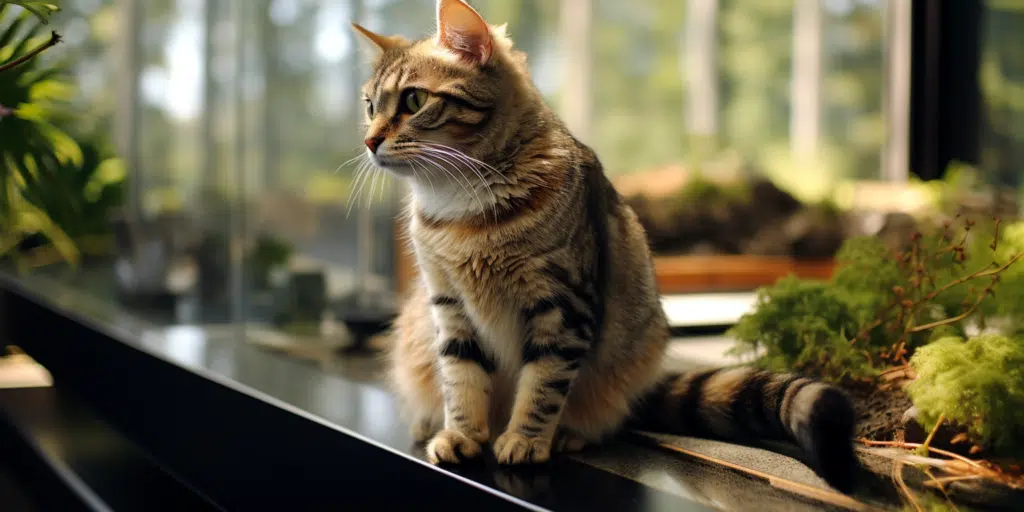
Breed Overview
The European Shorthair cat is a beloved companion for many families. With their loyal and affectionate nature, this breed has been cherished by humans since ancient times. The origin of the European Shorthair can be traced back to Rome, where they were prized for their hunting abilities.
As they made their way around Europe, they became well-known as excellent farm cats who could help keep down vermin populations. This led to them becoming accepted as popular house cats in more recent years.
The breed was originally known as Celtic Shorthairs; however, today it is usually referred to as the European shorthair or simply ‘Euro’ for short. These cats are known for having a calm demeanor and being friendly with both people and other animals alike – making them an ideal choice for families with children or other pets at home! They are also relatively low-maintenance when it comes to grooming due to their short hair which requires minimal brushing or combing throughout the week.
In terms of physical appearance – the European shorthair can vary quite considerably in size and weight depending on gender; males tend to be larger than females with some males reaching up to 16 lbs! Their coat often has a unique patterning which may include tabby stripes, mottled patches, or even solid colors like black or white depending on their genetics!
When it comes time to choose your new furry friend – why not consider giving one of these wonderful creatures a chance? Thanks in part to responsible breeding practices over the years – rescue organizations have plenty of adoptable European shorthairs that would love nothing more than to find a new loving family home!
So if you’re looking for an easygoing companion that isn’t too demanding when it comes time for grooming then look no further than the always reliable Euro!
The European Shorthair Cat’s name is indicative of its origin, as the breed is believed to have originated in Europe. Specifically, it is thought that these cats were first bred in Sweden and Finland. The two countries are known for their long winters and cold climates which can explain why the short coats of these cats were favored by early breeders from this region.
Identifying European Shorthair Cat
The European Shorthair is a loyal, affectionate companion with an air of wildness. It has a strong and muscular body, large ears, and long legs which give it an imposing appearance. Although this cat loves to cuddle and play, it is not content to just stay on your lap all day.
It needs exercise and likes to be outside frequently as its hunting instinct is quite strong; mice don’t stand a chance in the presence of this cat! The European Shorthair makes for a perfect family pet as it enjoys human contact yet still retains its independent nature.
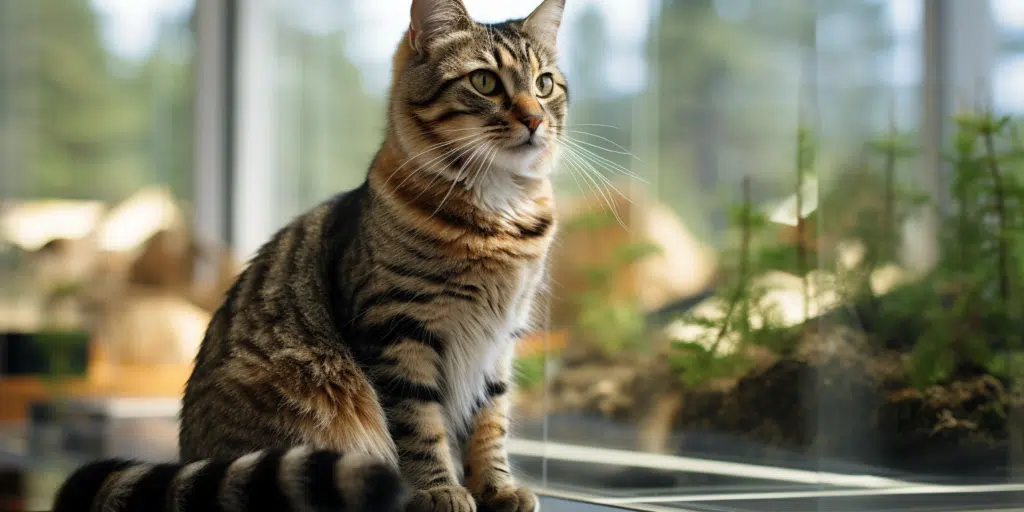
The European Shorthair Cat is known for its beautiful array of color variations. A common sight is the brown, black, tan, and gray coats that often feature a distinctive tabby pattern. Other popular colors include cream, blue-gray, red tabby, silver tabby, and calico.
These cats also come in various shades of white and yellow – with some having unique markings such as spots or stripes. Each coat is unique to the individual cat and may even change slightly over time!
Personality Traits
The European Shorthair is an intelligent, athletic, and loyal cat that loves to form strong bonds with their human companions. They are known for being friendly towards people of all ages and enjoy playing with children. This breed also has a territorial streak which should be taken into account when introducing them to other animals or younger children.
Despite the variety in individual personalities, European Shorthairs are generally balanced between playful and loyal making them some of the best companion cats for a wide range of people including young children and seniors.
The European Shorthair is a loving cat that has a very affectionate disposition towards its owners and their children. This breed of cat loves to play with kids, but early socialization needs to take place so the boundaries between them are clear.
This will help ensure that both sides understand each other and form a bond of trust. With proper supervision, these cats can be wonderful companions for young children!
When it comes to other pets in the home, the European Shorthair generally gets along well with them if they’re given time to adjust. While they have strong hunting instincts, they can learn to coexist peacefully with small animals such as hamsters or guinea pigs if given enough time and patience. Early socialization will also help in this process–so make sure you reward your cat when it behaves properly around other pets!
Activity Level
European Shorthair cats are an excellent choice for a pet. They have the perfect combination of playfulness and cheerfulness, while still being calm and obedient. This makes them ideal companions who can provide comfort and joy to their owners.
The breed is known for its intelligence and eagerness to please, as well as its adaptability to different environments or lifestyles.
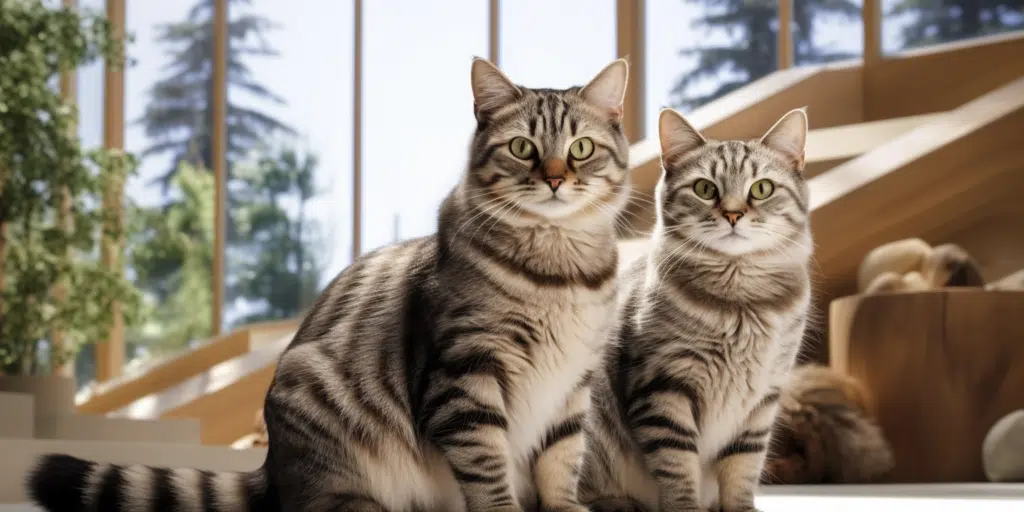
The activity level of European Shorthair cats will vary from individual to individual depending on their age, temperament, health, dietary intake, and environment. Generally speaking though they tend to be fairly active cats who enjoy some form of interactive playtime with their owners each day such as fetching toys or chasing laser pointers.
They are also known for having an endless supply of energy that often leads them into mischievous behavior if not provided with enough stimulation throughout the day such as scratching posts or cat trees which can help keep them occupied when you’re away from home at work or school.
Exercise is also important in helping maintain a healthy weight; regular grooming sessions should help keep your kitty’s nails short so they don’t accidentally scratch furniture or people during bouts of excess energy!
European Shorthair Cat Loyalty
The European Shorthair Cat is known for its unwavering loyalty, making it one of the most popular breeds among pet parents. These cats have an instinctive need to please their owners and will often follow them around the house, desperate for attention. They love snuggling up on laps and are very affectionate with their humans.
Also to being a loyal companion, these cats are also known for their intelligence and playful nature. They enjoy playing games such as fetch or hide-and-seek and even learn tricks such as shaking paws or rolling over when asked.
As independent animals, they can entertain themselves but still appreciate quality time spent with their pet parents. When it comes to food, European Shorthair Cats enjoy eating a variety of different types of treats but prefer high-quality wet food that is packed full of nutrients and vitamins that keep them healthy in mind and body.
Overall, this breed makes an excellent choice for those seeking a loving companion who loves to cuddle up during movie night while also providing hours of entertainment through interactive playtime sessions – all while remaining incredibly loyal throughout!
Love Of Water
The European Shorthair cat is known for its low maintenance and easy grooming needs. Its short fur coat requires only a weekly brushing to keep it looking smooth and glossy.
However, what sets this breed apart from other cats is its love of water! These kitties are known to actually enjoy taking baths and they even enjoy playing around in the sink or tub! Some owners have found that their pets will even jump into the shower with them while they’re bathing.
Not only do these cats not mind getting wet, but some have been seen swimming in pools or paddling away in a lake! This could be due to their long history as fishermen’s companions, which has given them an affinity for water activities. Whatever the reason may be behind this behavior, one thing is certain: The European Shorthair cat loves playing in and around water!
Trainability
European Shorthairs are known to be loyal, friendly, and intelligent cats. These characteristics make them exceptionally trainable. With positive reinforcement methods such as the use of treats and praise, owners can easily help their European Shorthair learn basic tasks such as litter box training.
As they are loyal creatures by nature, they will usually seek approval from their owner when being rewarded for good behavior; this makes it easier for them to learn new commands or tricks.
Training a European Shorthair cat is also an excellent way for an owner to bond with their pet. Not only does it provide mental stimulation which keeps the cat engaged and healthy, but it also allows both the cat and its human companion to develop trust and understanding between one another.
Playing games that involve problem-solving or agility tasks helps stimulate their minds while having fun at the same time! Additionally, with regular training sessions comes consistency in behaviors; this means that your European Shorthair will understand what is expected of them without confusion or hesitation.
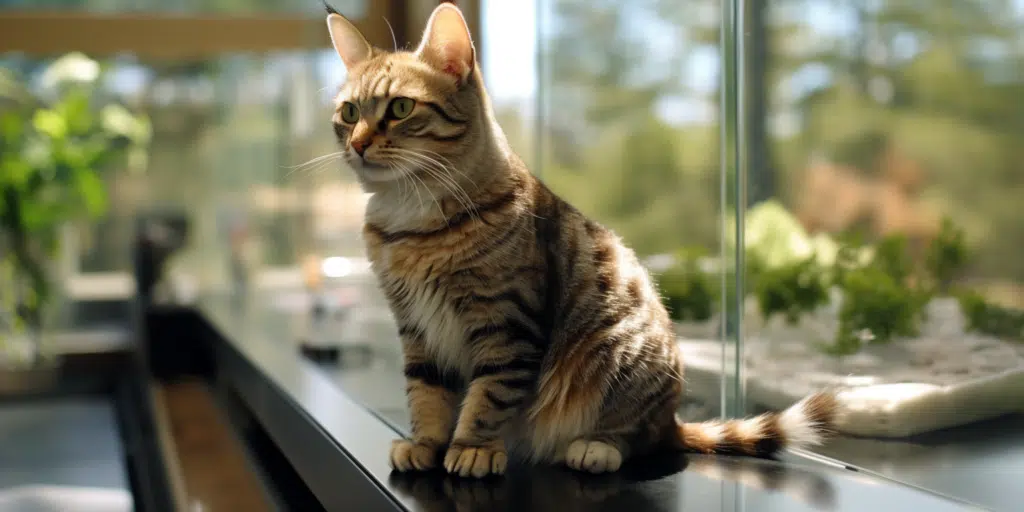
Adult Size
The European Shorthair is a medium-sized cat, typically weighing between eight and 15 pounds. The average height of the breed ranges from 8-11 inches for males and 7-10 inches for females. These cats are quite compact with a length that usually does not exceed 16 inches in either gender. They have thick fur coats that can vary in color from white to black to tabby markings, and even bi-color or tri-color combinations!
These cats are known for their muscular bodies and strong legs, making them agile hunters as well as active companions. Their short fur makes them an ideal pet for those who don’t enjoy brushing their cat every day – they only need occasional grooming to keep their coat healthy.
Despite being smaller than some other breeds of cats, the European Shorthair is surprisingly strong: they have been known to jump up onto high counters or cupboards without any difficulty! This combination of strength and agility makes them perfect playmates who love chasing after toys or exploring new places around the house – always keeping their owners on their toes!
European Shorthair cats grow quickly during their first year of life, with the most noticeable growth occurring between the ages of three to six months. After this stage, their growth rate begins to slow and they reach full maturity around a year old. While kittens tend to mature faster than adult cats, owners need to continue providing adequate nutrition and exercise throughout the cat’s life for them to stay healthy.
During adulthood, European Shorthairs can be expected to maintain a steady weight and size. However, if an owner notices any significant changes in their cat’s weight or size then it could indicate a potential health issue or nutritional deficiency that should be addressed by your veterinarian immediately. With proper care and nutrition, European Shorthairs can enjoy long lives as loyal companions for many years!
Life Expectancy
The European Shorthair are known to have a long life expectancy due to their hardy nature. On average, an indoor European Shorthair Cat can live up to 15 – 20 years if they are well taken care of.
To make sure your European Shorthair Cat reaches their full potential lifespan it is important to provide them with proper nutrition and regular veterinary check-ups. Additionally, keeping them indoors will help protect them from disease-carrying pests and other dangers that cats may encounter outside.
Grooming should be done regularly as this breed has thick fur which can easily become matted if not taken care of properly. Regular playtime activities such as puzzles and toys will help keep your cat entertained and mentally stimulated while providing plenty of love and attention helps build a strong bond between you both!
Providing your cat with a clean litter box will ensure that they stay healthy by preventing the spread of any parasites or illnesses in the home environment. With all these things in mind, you can rest assured knowing that your beloved European shorthair cat will live their best life!
European Shorthair Care
Caring for a European Shorthair cat can be an incredibly rewarding experience. The breed is known for its high energy levels, intelligence, and overall good health, so it’s important to maintain a routine of care that will keep your pet happy and healthy.
First and foremost, you’ll want to ensure that your European Shorthair has access to regular vet checkups. These visits are important not only for detecting any potential health concerns early on but also for developing a personalized care routine that works best with your pet’s needs.
Regular wellness exams are especially important since the breed is prone to certain genetic issues such as hip dysplasia or heart conditions.
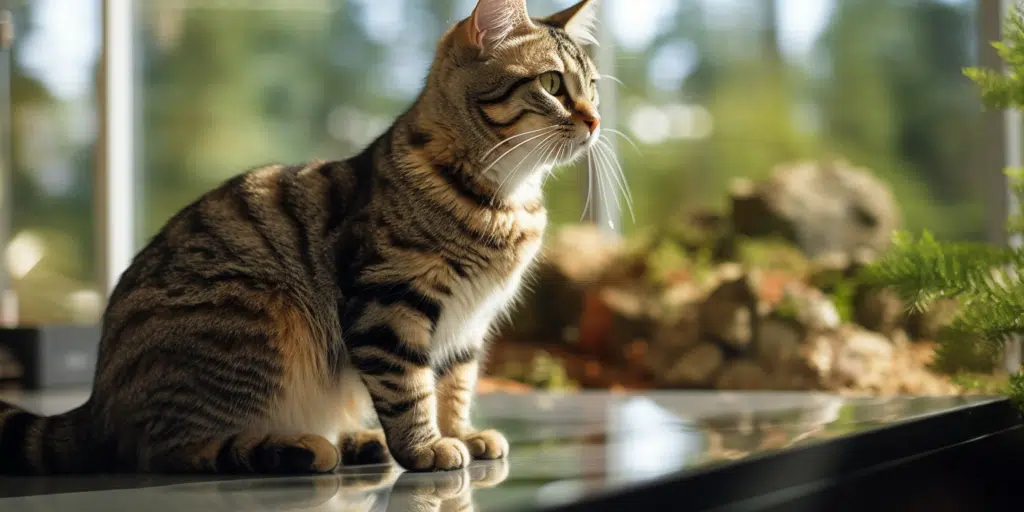
In addition to scheduling regular appointments with your vet, you should also add a scratching post or two into your living environment. This will help promote healthy scratching habits in the cat while keeping their nails in top condition at all times. Don’t forget about their ears either; these should be examined regularly for signs of dirt buildup or infection as well as wax accumulation which can cause hearing loss if left untreated.
To keep your European shorthair clean and healthy, you may want to consider starting up a teeth-brushing regimen with them too! Talk with your veterinarian about what type of toothpaste would work best based on age, size, and other factors related specifically to the individual pet’s needs. Smart interactive toys can also help stimulate mental activity in cats while satisfying their need for exploration – so make sure there are plenty of those around too! Finally, try giving them enough space (like adding a cat tree) where they can run around freely without feeling confined or restricted in any way – this will help them get much-needed physical exercise throughout the day which keeps stress levels low and happiness high!
European Shorthair Diet
When it comes to nutrition for a European Shorthair cat, a high-protein diet is essential. Cats are obligate carnivores, meaning they require animal proteins to maintain their health and must have meats as the main ingredient in their diet.
A good quality commercial cat food should be chosen that contains real meat as the first or second ingredient on the label. Avoid foods that contain by-products, artificial flavors, and colors, fillers such as wheat gluten or cornmeal, and preservatives like BHA/BHT.
In addition to providing your European Shorthair with a high-protein diet, you should also make sure they have access to fresh water at all times. Water helps them stay hydrated and supports healthy digestion while aiding in nutrient absorption from the food they eat. It’s important to provide clean water every day so your pet can get the fluids they need for proper bodily functions including kidney function and urinary tract health.
Adding supplements into your European Shorthair’s diet can help keep them healthy by providing vitamins and minerals that may not be provided through regular meals alone. Omega 3 fatty acids play an important role in maintaining your pet’s immune system health which is why these supplements are highly recommended for cats of all ages especially those with allergies or chronic illnesses like arthritis or diabetes .
A balanced nutritional plan for a European Shorthair includes both wet canned food along kibble served twice daily in smaller portions throughout each day rather than one large meal at once; this will help ensure they don’t overeat while still getting all of the nutrients their bodies need Also remember not to leave out any treats as these could quickly become unbalanced sources of calories if given too often! Treats should only supplement meals – never replace them – because even though cats love treats very much they must get adequate nutrition from proper meals first before indulging in oinsnacks!
Water is an essential part of any cat’s diet, and European Shorthair cats are no exception. To ensure that your kitty stays healthy, provide them with fresh, clean water daily. It is best to place the water bowl at least three feet away from their food as cats have sensitive noses and may be overwhelmed by a strong smell of food which may cause them to drink less. Change out the water regularly as well, at least two or three times a week if possible.
For extra variety in your cat’s drinking routine, try adding ice cubes made from either plain water or flavored broth such as chicken or beef bouillon into the bowl! This can help encourage your cat to stay hydrated without becoming bored of just regular tap water. Additionally providing multiple bowls around the house will give them plenty of options for when they become thirsty throughout the day!
Exercise Requirement
It is important to keep European Shorthair cats active and engaged through play. These cats are very curious, energetic, and mischievous, so they need plenty of playtime to be physically and mentally healthy.
This can include interactive toys such as laser pointers or feather wands, as well as more traditional cat toys like stuffed animals or balls. Regular exercise will help the cat stay fit and strong while also providing the necessary mental stimulation that keeps them alert and engaged.
Playing with your European Shorthair also provides a great opportunity for you to form a strong bond with your pet.

In addition to physical activity, these cats must have access to stimulating objects like scratching posts or cardboard boxes filled with crinkly paper that they can explore on their own terms.
This helps give them an outlet for their instinctive behaviors while giving them something fun and engaging to do during times when you are not available for playtime; it also gives them something interesting in their environment when they are feeling bored or anxious.
Keeping your European shorthair cat active through regular physical activity combined with enrichment activities is essential for keeping him happy, healthy, and contented throughout his life!
Shedding Levels
European Shorthair cats are known for their agility and love of play. To encourage movement and exercise in your furry friend, puzzle toys that reward them with treats can help stimulate them mentally and physically. While the European Shorthair cat is a low-maintenance breed when it comes to grooming needs, they do shed throughout the year. The amount of shedding in this breed varies from individual to individual, but some general patterns may be observed throughout different stages of life.
In kittens and adolescent cats, shedding levels tend to be quite high as their coat matures into adulthood. During this period, regular brushing can help control excess fur buildup around the house. As cats mature into adulthood (around ages 2-3), shedding becomes much more manageable as adult coats become established.
Adult European Shorthairs tend to shed less than kittens due to their shorter fur length—but regular brushing is still necessary during this stage of life to remove dead hairs from their coat before they get stuck in furniture or carpets!
Finally, senior cats may experience increased shedding due to age-related changes such as hormone imbalances or decreased activity levels; however, frequent brushings should still keep the problem manageable overall!
Health Issues
The Exotic Shorthair is a shorthaired breed that is relatively low-maintenance when it comes to grooming. Its coat requires only weekly combing to remove loose hair and does not tangle or mat easily.
Despite this, however, the breed can still be susceptible to certain health issues and diseases, such as heart disease, kidney disease, and polycystic kidney disease; diabetes; respiratory infections; feline infectious peritonitis (FIP); and hypertrophic cardiomyopathy.
Other common ailments include dental problems, eye disorders (such as progressive retinal atrophy), hip dysplasia, skin allergies, flea infestations, ear mites, and parasites.
Poor diet and living conditions can have a significant impact on the health of a European Shorthair Cat. A poor diet lacking essential nutrients can lead to nutritional deficiencies, which can cause medical issues such as anemia, skin problems, and weight loss. Poor living conditions may also expose cats to harmful bacteria or parasites that could lead to infections or illnesses.
To prevent these diseases owners need to provide their cats with a balanced diet and access to clean water at all times, as well as ensure they are up-to-date on all vaccinations. Additionally, regular veterinary checkups should be scheduled so any potential health issues can be identified early and properly treated by a professional.
By adhering to these best practices, owners will greatly reduce the risk of their cat developing serious health complications from poor nutrition or unhealthy living conditions

Buying Tips
- Research the breed: Before buying a European Shorthair Cat, research their personality traits and how they interact with humans and other animals. Knowing what to expect from this breed will help you determine if it’s the right fit for your family.
- Visit a breeder or shelter: When looking for a European Shorthair Cat, consider visiting both breeders and shelters to find one that fits your lifestyle best. Be sure to ask questions about the kitten’s health history as well as its parents’ temperaments before making any decisions.
- Look for signs of good health: When purchasing a kitten, look out for signs of good health such as bright eyes, clean fur, clear breathing, and an active nature during playtime or when exploring new things in its environment. If you notice any of these signs in a potential pet, it is likely healthy and ready to be taken home!
- Ask about vaccinations: Make sure that any kittens you are considering have been vaccinated against common diseases such as feline distemper and rabies so that they can stay healthy throughout their life with you!
- Check references: Ask the breeder or shelter for references from previous buyers who have purchased kittens from them before—this is an excellent way to get some insight into how reputable they are in providing healthy cats!
Related: Purrfect Picks: 250+ European Shorthair Cat Names and How to Choose!

Conclusion
The European Shorthair Cat is an excellent choice for anyone looking for a pet that is intelligent, affectionate, and easy to care for. They are low-maintenance cats who enjoy spending time with their owners and make great companions.
Their unique appearance and calm demeanor make them stand out from other breeds of cats. A European Shorthair Cat can be the perfect addition to any home as they are sure to bring joy and laughter into your life with their playful personality.